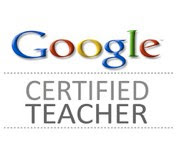Educon Session 1: Facilitator: Linda Nitsche
Conversation Description: If schools kill creativity, then what hope do we have of helping our students be prepared to devise creative and imaginative solutions to problems in their futures? Come examine frameworks for thinking and working creatively. Explore and experience creativity, innovation, and imagination in action. Reframe your problems into opportunities.

We each contributed to a wall of the "bricks" that inhibit creative thinking-
Frameworks for Creativity:
Paul Torrance-

-incubation formula for stages of creativity-
1.heightening anticipation: warm-ups, arouse curiosity
2. deepening expectations - apply to content curriculum but look at differently. no rigid path.
3. keeping it going- stretch. go beyond. apply outside of specific area.
research: children who scored high in creativity were more successful than those with high IQ (over 40 years of watching, testing).
elements: innovative, adaptive, creative strengths
Fluency:brainstorming. rules. as much as possible. open up to all ideas. avoid criticism!!!! no comments (+ or -). piggybacking on someone else's idea. practice hearing others' ideas and use them. oddball stuff-want kids to feel comfortable going beyond. taking risks.
Flexibility: flexible thinking, ability to get past your set perceptions of the first picture that popped in your head. takes practice. notice that you're stuck there.
Originality: the result of good fluency and flexibility. that one good idea that comes out.
Elaboration: a creative process isn't just the idea, it's how you elaborate on the idea. example: think up a cool car, be able to give all the details of it.
Scamper: ideation strategy
S=Substitute (other ingredients, materials, etc. )
C=combine (blend)
A=adapt
M=modify (magnify,minify?)
P=Put to other uses
E=eliminate
R=Reverse (roles or rearrange patterns)
start with a question and move through the "SCAMPER" to look at possible answers from different perspectives. OR start with a statement of fact and use scamper to generate questions. look at knowledge, ideas from a variety of perspectives.
"What if?" -"classic phrase. use it!"
Lateral Thinking: from the mind of Edward De Bono
(youtube video edward de bono on creative thinking). will embed here whenever I am able to get onto youtube :)
challenge the process.
provocative statement- look at the problem in an "impossible, contradictory way"
random words- strategy where you choose a totally random word. (from anywhere). attach it
and use it to brainstorm. does it help solve the problem in any way. (takes your mind away from its' preconceived notions of something and helps you see it in a new way).
parallel thinking- 6 hats, take on different viewpoints
So what?
imagine it project- fascinating collection of videos. watch video and record thoughts
creativity
imagination
innovation
curiosity
Behaviors we want to encourage:
•imagination
•awareness
•curiosity
•risk taking
•complexity
•playfulness
Now what? Remember the barrier wall we created at the start of the session -
Name a bridge. How can we knock down the barriers?







No comments:
Post a Comment